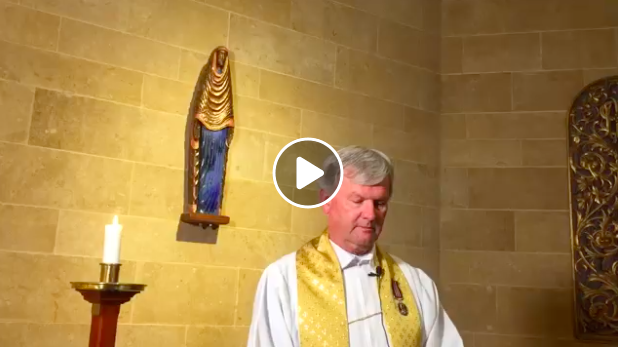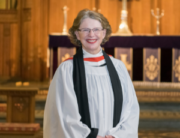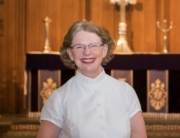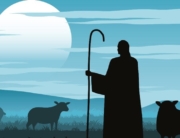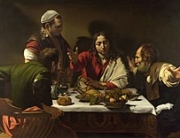Emmaus Road: A sermon by The Very Rev’d Frank Nelson
Acts 2:14a, 36-41, Psalm 116:1-4,11-18, 1 Peter 1:13-25, Luke 24:13-35
Among my favourite Easter stories is that of the Road to Emmaus. Perhaps it’s because Christine and I have always loved to walk and talk together. It’s a time of being together, a time to discuss the events of the day and work through various issues. Like many these days we are revelling in Adelaide’s beautiful parklands and noticing the different kinds of people out walking. There are those who, headphones clamped around their ears, seem oblivious to anyone else on the path. There are those who shuffle to the side, moving away in fear of getting too close and refusing to make eye contact. And there are those, and I like to think we are among them, who make it their business to greet everyone with a broad and cheerful smile.
This idea of a journey, of going somewhere, of being on a pilgrimage, is a feature of Luke’s Gospel and often includes an Aha! moment. In preparing this sermon and the story of the disciples on the Road to Emmaus, I have found myself thinking of some other journeys in Luke’s Gospel, and some of the journeys I have been involved in or know about. As I speak there are a number of pictures that come to mind which help to capture the journey and allow me to explore the ideas they hold in greater depth.

The first is a scene in the foothills of the southern Drakensberg, that great range of mountains that separates the coastal plains from the Highveld in South Africa. We were driving along behind a bus – laden with people and chickens and bicycles and brightly coloured shopping bags – when it stopped at the top of a hill. Two people got off and began to walk along a narrow footpath towards an unseen destination in the distant hills. A man and a woman, clearly together, but one behind the other as is the wont of the Zulu people, used to traversing the Valley of the Thousand Hills. While this couple obviously knows where they are going, the same cannot be said for the disciples who followed Jesus. Come, he said, leave your nets, leave your father, leave your job, leave your security – and follow me.
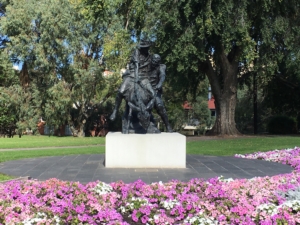
The second picture is one that I took yesterday, ANZAC Day. Most days I pass this statue of Simpson’s Donkey on my early morning walk. It stands at the intersection of War Memorial Drive and King William Road just off the banks of the Torrens. For me there is always an immediate connection with the Parable of the Good Samaritan who picked up the injured traveller, put him on his donkey and took him to an inn. Jesus used the parable to elicit an Aha! moment to the question: Who is my neighbour? (Luke 10: 29-37).
The enigmatic photo, and now statue, replicated many times over, represents the mateship that was fostered at Gallipoli and that has become so emblematic of ANZAC Day and the spirit that pervades this weekend. Since seeing a brilliant production of the puppet play “Warhorse” a few years ago, I cannot walk past this scene without thinking of all the animals that have been used in war – and the countless thousands, perhaps millions, that died. It speaks too to me of those for whom, even though the war itself may be over, the effect is not. Today we know far more about PTSD and the ongoing, too often life-threatening, certainly life-challenging, long term effects of war both on participants and their families and communities.
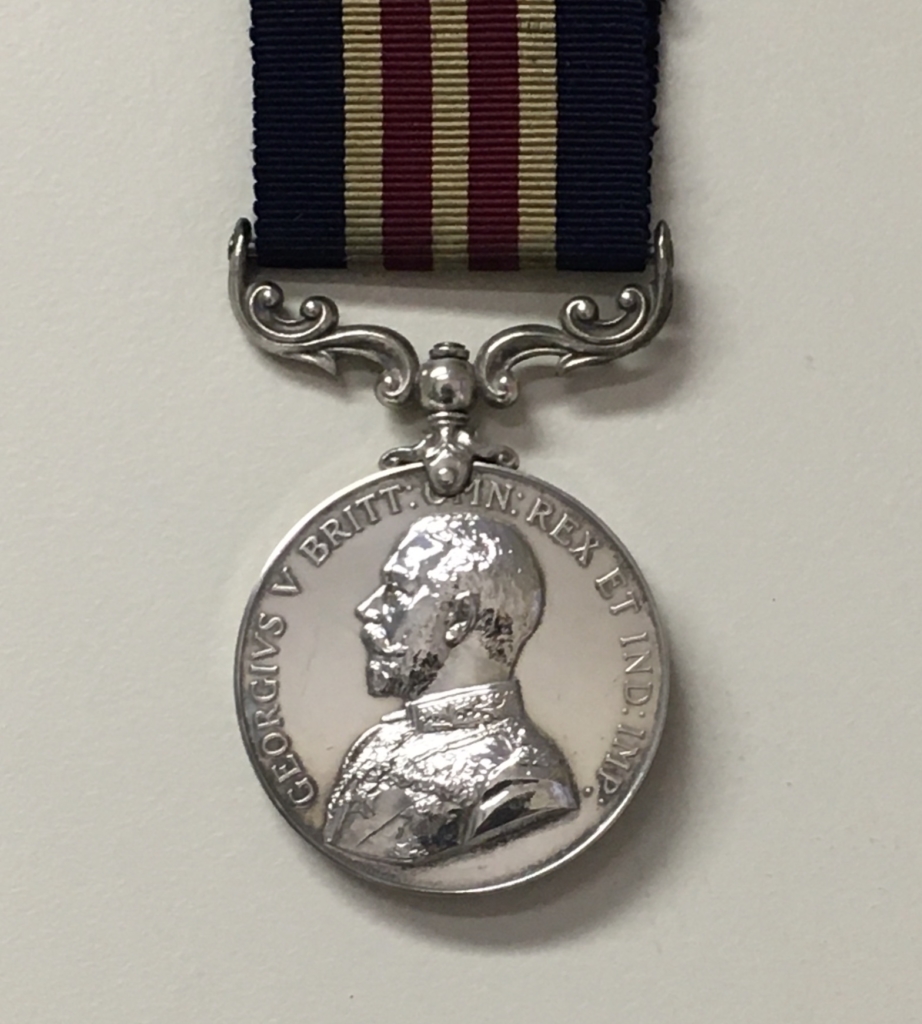
I never knew my paternal grandfather but I did know one particular story. He served as a stretcher bearer and was awarded the Military Medal for his service at the Battle of Delville Wood on the Somme in 1916 (in some ways the South African equivalent of Gallipolli). What long term effect did those endless hours of carrying horribly wounded young men through the mud of the trenches have on the twenty six year old Reginald Nelson? Did that contribute to his relatively young death? Simpson’s Donkey reminds me too of the ongoing need for mateship of those whose lives continue to be scarred by war, and the families of those for whom the burden became too much. They too are our neighbours.
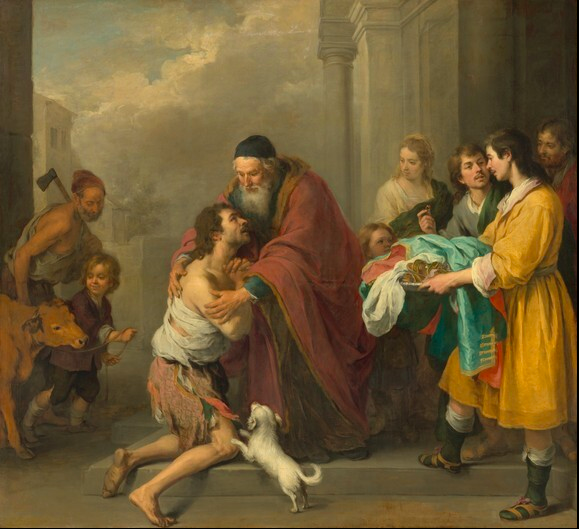
Another journey story in Luke’s Gospel is of that of the Prodigal Son. The parable told by Jesus has inspired many artists including Bartolomé Murillo who painted his famous painting in about 1670 for the Church of the Hospital of Saint George in Seville, a hospice for the homeless and hungry. There’s something of each of us in the parable – we can, in turn, be the prodigal, the loving father, the stand-offish offended older brother. R But for our purposes today it is the journey of the younger son, away from his father and then back to his father, that brought new light into his life. Destitute in a foreign country the boy comes to his senses. He has an Aha! moment and says, “I have sinned….” (Luke 15: 11-32).
I have been intrigued by reports coming from a variety of sources during this coronavirus time. And I am not thinking now of the so-called front-line workers – the medical people, the researchers, the political leaders, the supermarket shelf-stackers, the cleaners of public toilets. Rather, it is the accounts of air pollution clearing, of clean canals and waterways, of a kangaroo hopping through the city, the return of birds and other animals to our normally human-infested cities. There is opportunity for an Aha! moment in regard to our treatment of our planet earth – brought about by a terrifying disease bringing us to our senses and opening our eyes to the long term effects of pollution and profligate abuse of natural resources.
But let’s go back to our Gospel story and the Road to Emmaus (Luke 24:13-35). Two disciples trudging along the road are joined by a stranger. He seems not to have heard the biggest news of the day. As they walk the stranger offers unexpected insights as “beginning with Moses and all the prophets, he interpreted to them the things about himself in all the scriptures.” In Luke’s eyes the reference to Moses is not incidental. Moses is associated with the Exodus – that great founding story of the ancient People of God. It is a story of rescue from slavery, from fear, and, yes, a journey into the Promised Land. It’s a journey of trial and mistakes, determination and formation. A journey during which the two great maxims are given to the world: Love God. Love your neighbour. For Luke this reference to Moses and Exodus (and all the prophets) leads to Jesus, a meal and the formation of a new community.
The Aha! moment of the Emmaus Road story comes when the stranger took bread, blessed, broke and gave it to them to eat. How their minds must have flashed back to a few days earlier when, at the Last Supper, Jesus took bread, blessed, broke and gave it to them saying, “This is my Body.”

And so it is for us too. Deprived as we are of receiving the sacrament of Holy Communion, we nonetheless are able to see Jesus in the bread and wine, in whatever form our meal appears today, and to hear His words – “Do this in remembrance of me.” We may not be able to come together at present to share bread and wine, but we can delve into our Bibles to read the stories of Moses and the prophets; take a Gospel or an Epistle and read it is a whole – thinking, wondering, mulling over it – allowing God to speak through word and image. We may not be able to gather physically at present to share the Peace but we can pick up the phone, write a letter, smile at someone on the path and so continue to create community, continue to recognise the Christ in our sister, our brother, the stranger who appears in front of us.
May the light of the risen Christ bring many Aha! moments into our lives as we continue this extraordinary journey along which we have been called.


